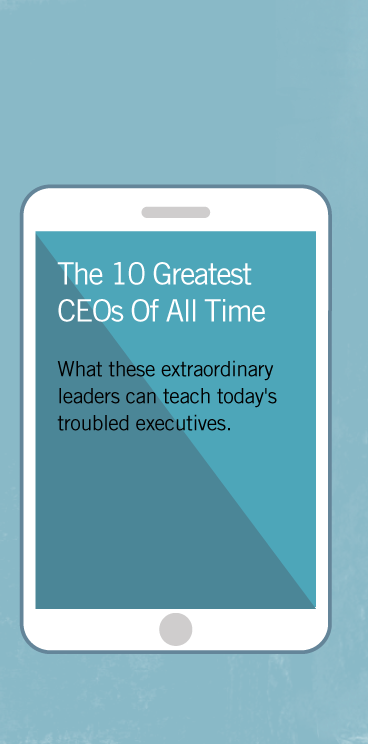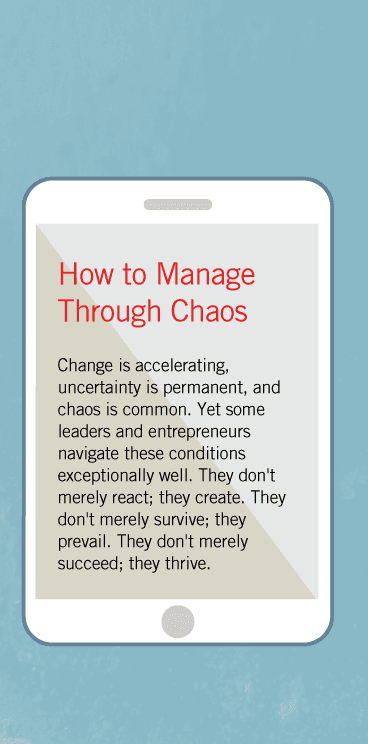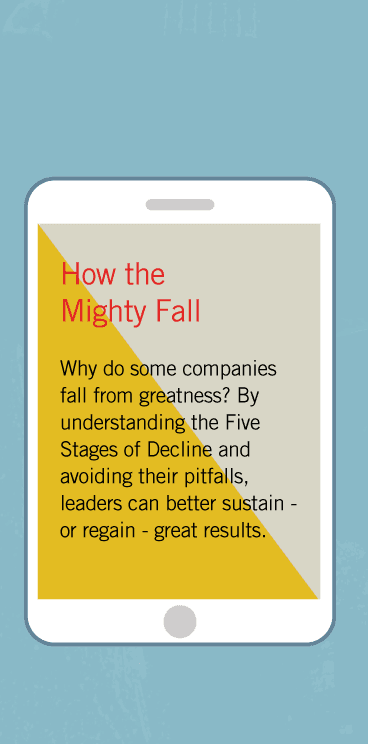The Silicon Valley Paradigm and Why It Won
Which of the following companies is more successful?
Company A is 6 years old with nearly $1 billion in annual revenues. Venture capital-backed, Company A went public less than two years after incorporation with a market valuation of $200 million.
Company B is 12 years old with $20 million in annual revenues. Company B is privately held with no venture capital and no immediate plans to go public.
The billion-dollar company is Businessland in 1988. The small privately held company is Hewlett-Packard in 1951, with numbers adjusted for inflation. By 1992, Businessland ceased to employ a single person. HP, on the other hand, had passed its 50th birthday as one of the most solid and admired corporations in the world.
Businessland followed what I’ve come to call the Silicon Valley Paradigm: Have a good idea, raise venture capital, grow fast, go public, and generate vast liquid wealth quickly. I find this model of entrepreneurship to be held by many of my MBA students when they first enter my course on entrepreneurship and small business management. Furthermore, business and political leaders often look to the Silicon Valley Paradigm as providing the archetypical model of entrepreneurship.
Yet HP—the consummate symbol of high-technology entrepreneurship—stands in stark contrast to the Silicon Valley Paradigm. Bill Hewlett and Dave Packard started without a great idea, obtained no outside capital, and grew slowly for two decades. Instead of being obsessed with rapid growth and the golden lure of an early IPO (Initial Public Offering), they concentrated on building an enduring great company.
The Silicon Valley Paradigm helps bring exciting new products to market and provides large amounts of investment capital, which is sometimes necessary for start-ups in rapidly growing, capital-intensive industries. Nonetheless, the evidence suggests two aspects of the Silicon Valley Paradigm that inhibit the building of enduring great companies.
- The emphasis on “time telling” versus “clock building”
- The drive to grow fast and go public.
Time telling or clock building?
The Silicon Valley Paradigm assumes that the key to starting a successful company is to begin with a good idea (technology, product, market potential, etc.) and ride the growth curve of an attractive product life cycle.
The people who build enduring great companies don’t necessarily share this assumption. When Hewlett and Packard started HP, they didn’t know precisely what products they were going to make. They started a company and then began to think about which products to manufacture.
The same was true for Masaru Ibuka when he founded Sony. Ibuka started the company without a specific product idea, much less a “great idea.” As Akio Morita reports in Made in Japan: “In this empty and bare old building, set among the rubble and devastation, the burned-out homes and shops of the once-prosperous downtown area of Tokyo. Ibuka started [the company] with seven employees...The small group sat in conference in the depressing surroundings of the burned-out department store, and for weeks they tried to figure out what kind of business this new company could enter.”
Paul Galvin, founder of Motorola, had no compelling product idea; he started by repairing B Battery eliminators. He was driven by the simple desire to work for himself and the grand ideal to build his startup—a five-person enterprise located in a small section of a leased building in a low-rent section of Chicago—into a great and lasting company.
J. Willard Marriott had only the drive to create a successful enterprise that he could build into an institution. He started his company by opening an A&W Root Beer stand in Washington D.C., since he couldn’t think of what else to do. From there, he built Marriott Corporation.
Corporate architects like Hewlett, Packard, Ibuka, Galvin, and Marriott realized that their most important creation is the company itself and what it stands for. If the entrepreneur can create a great company, it will generate many great ideas and transcend the limitations of any single life cycle. The Silicon Valley Paradigm inhibits us from embracing this crucial shift in thinking—the shift to viewing the company itself as the ultimate output.
Think of it this way. Imagine you met a person who could look at the sun or stars at any time of day or night and state the exact time and date. “It’s April 23, 1401, 2:36 a.m. and 12 seconds,” she’d say. This person would be an amazing time teller, and we’d probably revere her for the ability to tell time. But wouldn’t she be even more amazing if, instead of telling the time, she built a clock that could tell the time forever, even after she’s dead and gone?
What was Thomas Edison’s greatest creation? The light bulb? The phonograph? The motion picture machine? No doubt these were great inventions; but the true genius of Edison, as pointed out by Edison scholar Walter Vincenti, came in his creation of a highly organized, ticking R&D laboratory and, later, the General Electric Company. Edison died decades ago; GE ticks along with new inventions and contributions long after his death.
As Richard Schickel pointed out in his book The Disney Version, Walt Disney’s greatest creation was not Fantasia or Snow White or even Disneyland; it was the Walt Disney Company. Just as Ibuka and Morita’s greatest creation was Sony Corporation, and Hewlett and Packard’s greatest creation was the Hewlett-Packard Company.
The builders of great companies are clock builders, not time tellers. They understand that in order to build a truly great company, they must concentrate primarily on building the organization. The Silicon Valley Paradigm, on the other hand, emphasizes telling the time once, launching a business around a great product or service idea, and cashing in on that, rather than building a clock that can tell time over and over.
Indeed, starting a company with a great idea can prove to be a long-term liability. Xerox, for example, started with one of the world’s truly great ideas, the Xerox photocopier. But the very success of Xerox the product diverted the leaders of Xerox away from building the capabilities of Xerox the company. As a result, when Xerox’s Palo Alto Research Center created such revolutionary technologies as the laser printer, desktop publishing, electronic mail, mouse pointers, and graphical interface personal computers (the basis of the Macintosh), Xerox did not have the organizational capability to capitalize on these ideas and run with them to the market. True, Xerox benefitted from a single great idea (the Xerox copier) for years, but, as former Chairman David T. Kerans indicated in the Journal of the Academy of Management Executive, “Our success was so overwhelming, we became complacent.”
The corporate landscape is littered with time-telling, one-idea companies that died. Look at Visicorp: it was a product, not a company. The same is true for Ashton Tate, Osborne, and other highflyers that no longer exist.
In contrast, Motorola, HP, Sony and GM—four of the world’s best ticking clocks—all had their first products fail in the marketplace. Sony’s first product, for example, was a rice cooker, which failed. Minnesota Mining & Manufacturing began life as a failed corundum mine, thus leaving 3Mers to ask, “OK, that failed, what else can we do?” Hewlett-Packard had a number of product failures, ranging from electronic bowling alley sensors to an automatic urinal flusher, before it hit upon the audio oscilloscope. These failures taught humility and focused attention not on the products, but on developing the organizational ability to come up with excellent products, to take those products to market, to service customers, and so on.
Building a ticking clock requires patience and a long-term view. It requires thinking in terms of laying the foundation for the organization to be strong 50 and 100 years in the future. It might take decades to build the clock from scratch, learning from trial and error, persisting through failures. And therein lies another conflict with the Silicon Valley Paradigm.
Drive to grow fast and go public
The Silicon Valley Paradigm pushes companies to grow fast and attain liquidity early in their lives, usually via an IPO. The paradigm has an ethic of impatience: if a company hasn’t made it big within 10 or 15 years, the paradigm deems the firm a failure. And it’s an ethic often exacerbated by venture capital.
The problem isn’t venture capitalists as people, but the structure of the venture capital industry. Venture capitalists structure their funds so that they must find companies, invest in them, grow them, and attain liquidity within a very short time frame (usually less than 10 years).
By this standard, the following companies would have been failures: HP, Honda, Motorola, Nike, 3M, L.L. Bean, Wal-Mart, Walt Disney, McKinsey, Nordstrom, Procter & Gamble, Marriott, and Merck. None of these institutions grew at an explosive rate early in life, nor did any of them have investor liquidity as a primary goal.
Indeed, the myth of greatness coming primarily through explosive growth early in life is exactly that—a myth. L.L. Bean’s overnight success took 56 years of tinkering to grow from zero to $10 million (in today’s dollars) before its rapid growth phase. Walt Disney, one of the most celebrated of all entrepreneurial successes took over a quarter of a century to become a $30 million company in today’s dollars, and this during the rapid-growth phase of the motion picture industry. In Made in America, Sam Walton wrote that he took more than two decades to refine his retailing philosophy before launching Wal-Mart into a rapid-growth phase:
“Somehow over the years, folks have gotten the impression that Wal-Mart was something I dreamed up out of the blue as a middle-aged man, and that it was just this great idea that turned into an overnight success. But our first Wal-Mart store was totally an outgrowth of everything we’d been doing since (1945)... .Like most other overnight successes, it was about 20 years in the making.”
Notice something else about these institutions? They’re all companies with a powerful self-identity rooted in a set of core values. Instilling a strong set of core values and self-identity is a fundamental cornerstone of greatness. But as Bill Hewlett has pointed out, “If you grow too fast, too early, you can loose your values.”
Think of how much harder it would be to instill core values and self-identity in children if they went from birth to adulthood in two years, rather than 20. Just as shaping core values in a person takes time and reinforcement, so does instilling core values into the fabric of an organization.
But if a company is being pushed toward the artificial deadline of an IPO within five or seven years, it’s difficult to pay attention to instilling a fundamental set of core values and putting in place the organizational mechanisms to preserve and perpetuate them.
Going public is not de facto bad. It provides access to capital for expansion and a straightforward way to make stock ownership available to employees. And some outstanding companies did indeed go public early in life.
But going public should be a thoughtful decision. The problem is that, once you buy into the Silicon Valley Paradigm, it becomes an assumption. And it’s assumed that you’ll do it soon. The primary goal can then become pursuit of the IPO, rather than laying the foundations of a strong and enduring enterprise.
In its extreme form, the Silicon Valley Paradigm is a purely economic model. It lacks an underpinning of core values and deeper purpose. It proceeds from the assumption that business is ultimately only about making money and making as much money as possible as soon as possible.
There’s nothing wrong with making a lot of money. Indeed, high profitability is necessary for corporate health. But to build an enduring great company requires more than a purely economic vision. It requires building a company that is a community, a community undergirded by values and aspirations greater than making the most amount of money in the shortest possible time. In a great company, going public is never the primary goal, it’s simply a step in the company’s evolution.
Walt Disney didn’t aim for an IPO, he aimed to develop an institution that would forever bring joy to people through state-of-the-art animation and later, theme parks. Ibuka at Sony didn’t have the goal to “grow fast, go public, cash out;” he wanted to create a company that would provide a place for engineers to do useful work and to help in the revival of Japan. Bill Hewlett and Dave Packard simply wanted to work for themselves and to build a company that reflected their values; they would have rejected the Silicon Valley Paradigm outright had it been suggested to them.
When my colleague Jerry Porras and I asked Bill Hewlett what he is most proud of from his life’s work, he didn’t point to his net worth. And, although he is proud of HP’s products, he said he is most proud of having created a company that by virtue of its success, its values, and its practices has had a tremendous influence on the way business is done around the world.
The crucial question for leaders of small companies is this: why do you want to be in business in the first place? If your aim is to capitalize on a specific great idea or strike it rich in the IPO goldrush, then the Silicon Valley Paradigm will serve you well.
But if your aim is to build an outstanding institution—a role model company that reflects your values and remains prosperous and vibrant for decades, through multiple industry life cycles and multiple generations of leadership—if you want to build a clock that will tick and tell time long after you’re gone, consider the merits of a different model. Instead of seeking a single great idea that you can use as a vehicle towards an IPO, concentrate on the question “What kind of company do we want to build?” and then start thinking about what you’ll do to get that company moving.






